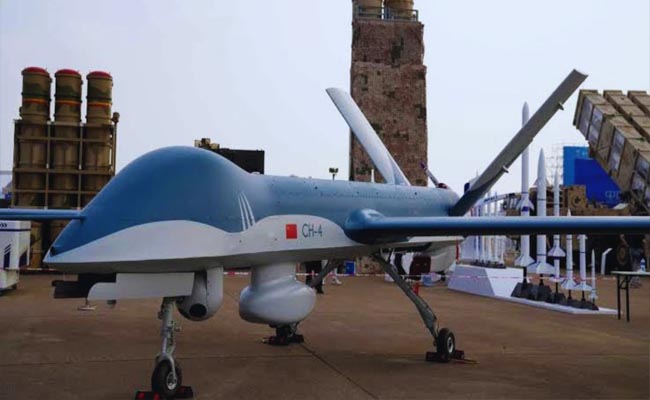China’s AI drones: A new front in India’s security challenge
By MYBRANDBOOK

Chinese military sources have announced plans to acquire up to one million drones by 2026, underscoring Beijing’s ambition to lead future warfare with AI-powered drone technology
With drones becoming a pivotal element in modern warfare, China is rapidly increasing its drone fleet as part of a broader strategy to enhance its military capabilities. Chinese military sources have reportedly revealed plans to acquire approximately one million drones by 2026, signalling Beijing’s ambition to dominate future battlefields with AI-powered drone technology. This move raises significant concerns for India, especially along the Line of Actual Control (LAC), where China’s deployment of AI-enabled kamikaze drones could pose a serious security risk.
The People’s Liberation Army (PLA) is expected to deploy AI-powered lightweight drones capable of flying for up to eight hours. These drones are designed to evade India’s existing air defence systems and execute precision strikes on key military assets, including command centres. Experts are particularly concerned about the potential for drone swarms, where hundreds or even thousands of drones coordinate attacks, overwhelming air defence systems and complicating efforts to protect critical infrastructure and troop movements. This new form of warfare poses a significant challenge to India’s ability to defend against advanced drone technologies.
Also Read: Optiemus to promote drone manufacturing localization in India
Furthermore, China’s growing drone capabilities could also impact India’s eastern borders, including Bangladesh, and potentially benefit Pakistan due to the strong military cooperation between Beijing and Islamabad.
In response to these growing threats, India’s Defence Ministry is working on developing advanced countermeasures. India has already deployed modern drones along the LAC and introduced laser-based Integrated Drone Detection and Interdiction Systems (IDD&IS) to neutralize hostile drones. Additionally, the country is enhancing its electronic warfare (EW) systems to detect and counter drone incursions. However, experts warn that traditional countermeasures, such as radio frequency jamming, may become less effective as AI-powered drones evolve.
To stay ahead, India must invest in next-generation technologies, such as fibre-optic drones immune to jamming and AI-guided drones capable of bypassing traditional defence systems. First-Person View (FPV) drones, which are cost-effective and capable of executing precise strikes, also present a growing challenge. Armed with anti-tank munitions, these drones can target high-value assets, making them an affordable yet powerful option for adversaries.
As China accelerates its drone capabilities, India must prioritize investments in advanced defence technologies to secure its military assets and strategic interests. Proactive measures to counter AI-enabled drone threats will be critical for maintaining India’s defence superiority in the region.


Centre notifies Aadhaar Amendment rules to boost good governan
This amendment is expected to foster innovation, streamline service deliver...

Kore.ai to transform enterprise business workflows with Agenti
The AI for Process platform enables organizations to design, deploy, and ma...

China’s AI drones: A new front in India’s security challen
Chinese military sources have announced plans to acquire up to one million ...

Doctors can now predict skin cancer severity using AI
The integration of AI in healthcare is transforming how medical professiona...


Icons Of India : PRATIVA MOHAPATRA
Prativa is a transformational leader with an incredible breadth of exp...

ICONS OF INDIA : SUNIL VACHANI
Sunil Vachani is the Chairman of Dixon Technologies (India) Ltd. Under...

Icons Of India : NATARAJAN CHANDRASEKARAN
Natarajan Chandrasekaran (Chandra) is the Chairman of Tata Sons, the h...


ECIL - Electronics Corporation of India Limited
ECIL is distinguished by its diverse technological capabilities and it...

NSE - National Stock Exchange
NSE is the leading stock exchange in India....

HPCL - Hindustan Petroleum Corporation Ltd.
HPCL is an integrated oil and gas company involved in refining, market...


Indian Tech Talent Excelling The Tech World - REVATHI ADVAITHI, CEO- Flex
Revathi Advaithi, the CEO of Flex, is a dynamic leader driving growth ...

Indian Tech Talent Excelling The Tech World - George Kurian, CEO, Netapp
George Kurian, the CEO of global data storage and management services ...

Indian Tech Talent Excelling The Tech World - AJAY BANGA, President - World Bank
Ajay Banga is an Indian-born American business executive who currently...